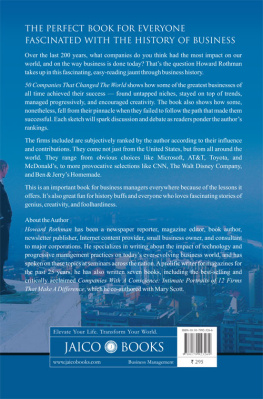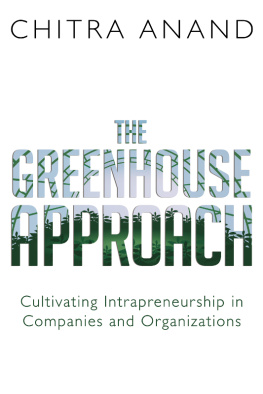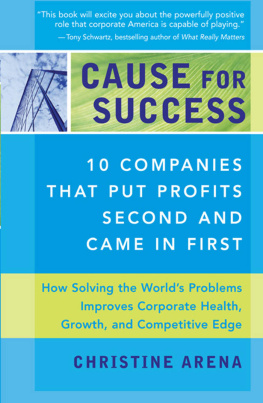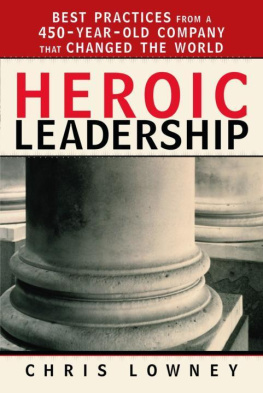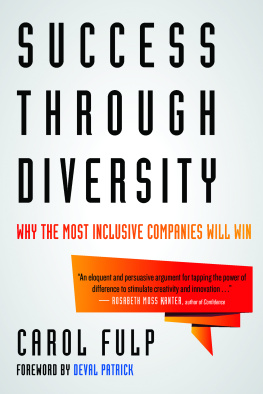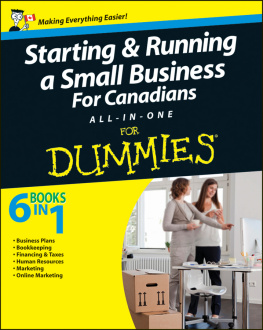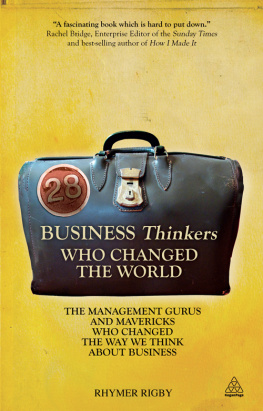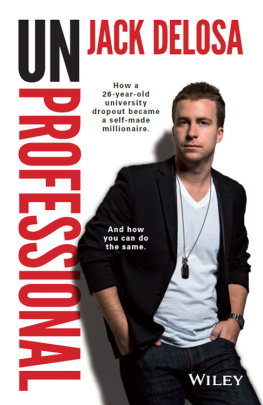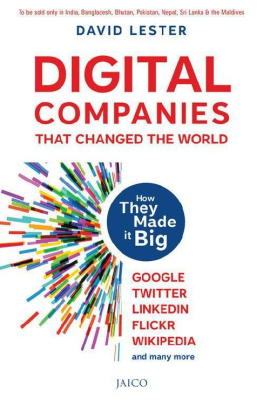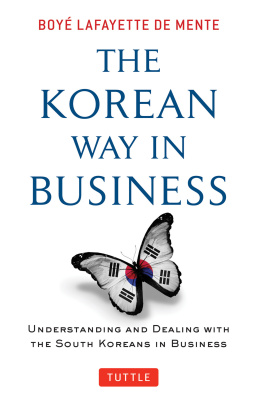
Published by Jaico Publishing House
A-2 Jash Chambers, 7-A Sir Phirozshah Mehta Road
Fort, Mumbai - 400 001
www.jaicobooks.com
Howard Rothman
Published in arrangement with
Career Press, Inc.
220 West Parkway, Unit 12, Pompton Plains
NJ 07444, USA
To be sold only in India, Bangladesh, Bhutan,
Pakistan, Nepal, Sri Lanka and the Maldives.
50 COMPANIES THAT CHANGED THE WORLD
ISBN 81-7992-326-6
First Jaico Impression: 2004
Sixteenth Jaico Impression: 2011
No part of this book may be reproduced or utilized in
any form or by any means, electronic or
mechanical including photocopying, recording or by any
information storage and retrieval system,
without permission in writing from the publishers.
Dedication
This book is dedicated to my family, who changed my world.
Acknowledgments
This book is the product of a great deal of research and many years of obser- vation. Much of what ultimately shaped it, in fact, was transmitted to me in unre- lated contexts. In thanking those who assisted in its development, therefore, I find myself reaching back to other books, articles, projects, and conversations that helped to form the initial basis for the selection process along with the analytical thinking that eventually produced 50 Companies That Changed the World. I also looked back to those direct interviews and suggestions that resulted in the shaping of the words ultimately found on these pages.
Thanks, then, to Ben Cohen, Hass Hassan, Peter Cove, Lee Bowes, Yvon Chouinard, Margot Fraser, John Kirk, Bernie Glassman, Paul Hawken, John Hickenlooper, Bruce Hutton, Wendy Weir, Marilyn Hamilton, Joan Shapiro, Joyce Meskis, Don Banducci, and, as always, Lew Goodman.
I would also like to specifically thank Pat Rothman, Ted Pinkowitz, Ed Epstein, Amy and Carl Boymel, Mary Scott, Leslie Petrovski, John Blakney, Bob Car mel, Louis Morgan, Pam Carson, David Wilbrecht, Barbara Friend, Ellen K aplan, Rober t Butler, Paul Desmond and Ken Tabb for both their general input and pinpoint suggestions; Michael Lewis for offering me the project in the first place; Jackie Michaels and Kirsten Beucler for their publicity and marketing support; John J. O'Sullivan for his editing and design; and the Doors, Steely Dan, the Afro Celtic Sound System, and the Waterboys for providing a soundtrack that helped propel it all.
I am, of course, solely responsible for the contents of this book and for any and all misuses I might have made of the suggestions received from those cited above, and others I have inadvertently failed to mention.
Introduction
N o matter how you feel about its individual entities or overall force, thecorporate world has a major and ongoing impact on our lives. We workin it. We eat the food it produces and distributes. We drive the cars itmanufactures. We communicate over its networks. We house and clothe,entertain and educate ourselves with the various items that it makes.Along the way, this corporate world helps shape what we are even as wethroughour feedback and supporthelp shape what it becomes.
In the following pages, you will read about 50 outstanding companies that havedramatically and permanently altered us. In the process, you will also see how thegeneral structure of businessand, along with it, our societyhas evolved over thepast few centuries. You will meet some individuals with extraordinary vision, courage,and commitment who struggled to realize their ideas and drive their companiesto success. In a very real sense, they are the true forces that have changed our world.
Growing up in a family that worked together to operate a busy retail store and avending company, Ive been more than an observer of the business world all my life.I have participated in it actively since I was barely in high school. I started sellingcigarettes and magazines during vacations, using an ancient mechanical coin sortingdevice every Saturday morning to count the change from our soft drink, coffee, andcandy machines. Later, when I became a journalist, I began as a reporter on thebusiness beat for a now defunct urban newspaper. Eventually, I wound up as acontributing editor for several large consumer and trade magazines, primarily coveringbusiness.
During that period, I encountered an array of interesting companies that weredoing unique and important things. I enjoyed writing about them so much I turnedseveral related projects into books. As a consultant or participant, I was also involved in the development of a number of commercial enterprisesranging from a stereodealership, an advertising agency for medical practitioners, a small business accountingfirm, and an Internet service provider.
When I started this book, my goal was to look into the various ways that companieslike these could change the world and examine the specific ones that havemanaged to pull off that lofty goal successfully. To find these companies, I began bycompiling a list with the naturals, such as Microsoft and Ford. Then, I drew upanother with industries that regularly had earth-shaking impact, such as the fields ofcommunications and transportation. I began circulating both to a network of associatesand colleagues that represented a broad range of interests. There were high-techexecutives and teachers. Public relations professionals and engineers. Business writersand shopkeepers. Salespeople and retired managers. Everyone generously commentedon my selections and most helpfully offered a few of their own. New listswere drawn up, recirculated, and refined. Eventually, a solid list of 50 companiessurfaced that I felt accurately represented the breadth and scope (if not the totality)of corporate impact on human life in the 19th and 20th centuries.
Then came the researching, writing, and ranking processes. I began by puttingthe companies into an order that I initially considered appropriate, and started examininga half-dozen of them at a time. Whenever I finished with one I promptlyreconsidered its existing rank, especially in relation to the companies that were thenimmediately above and below it on the list. I constantly asked myself which hadmore lasting influence, which really deserved to be on top of the other? And, moreoften than not, this resulted in a change of some sort. For example, I decided afterimmersing myself in both Philip Morris and Wal-Mart that the former has had moreof an impact than the latter, so I flipped the order of the two. I soon began printingout my most current rankings first thing every morning, posting it beside my computer,and then staring at it throughout the day. Few passed without me making atleast a tweak or two as the finished chapters started piling up and my knowledge ofall the companies increased. Several times I also deleted companies that I had originallytargeted. After examining them fuller, I no longer felt that they honestly belonged.At last, when an initial draft was finished, I circulated the final list amongmany of my original confidants. Most agreed with the new lineup, but a few suggestedadditional changes. Several of those were incorporated into the ranking thatthe finished book contains.
The profiles themselves, read in order or otherwise, offer insight into the oftenforgotten details of our various cultural metamorphoses as directed by these leadingbusinesses. For example, you will see how our means of transportation were transformedfrom trains and cars to airplanes and rockets. How the communications evolutiontook us from newspapers, to radio, to TV, to cyberspace. How we underwent asocial conversion through the introduction of electricity and telephones, chain hotelsand fast-food joints. The overall picture is one of business and societal alchemy at thehands of a few farsighted people, whose best ideas were usually copied and ultimatelyadapted into the mainstream. But the individual pictures are even more fascinating, for they show precisely how these leading firms managed to stay atop their changingworlds by following a singular focus, but altering direction as necessary whenever itproved critical.
Next page
